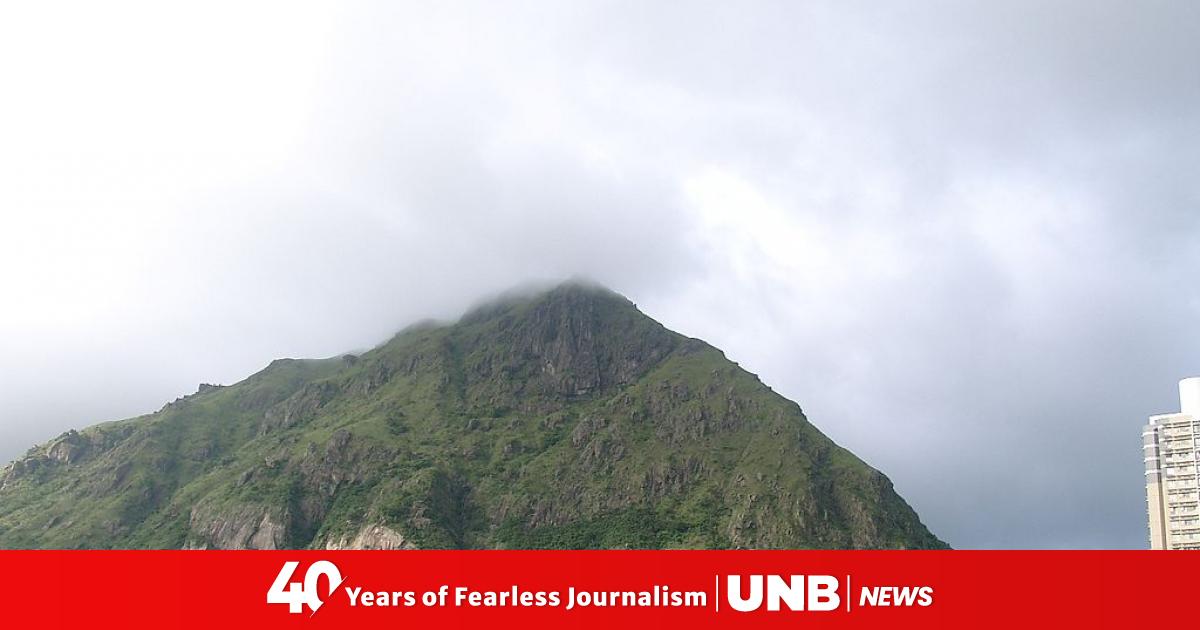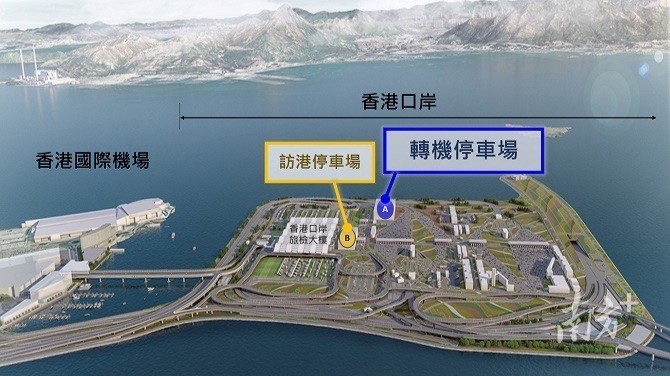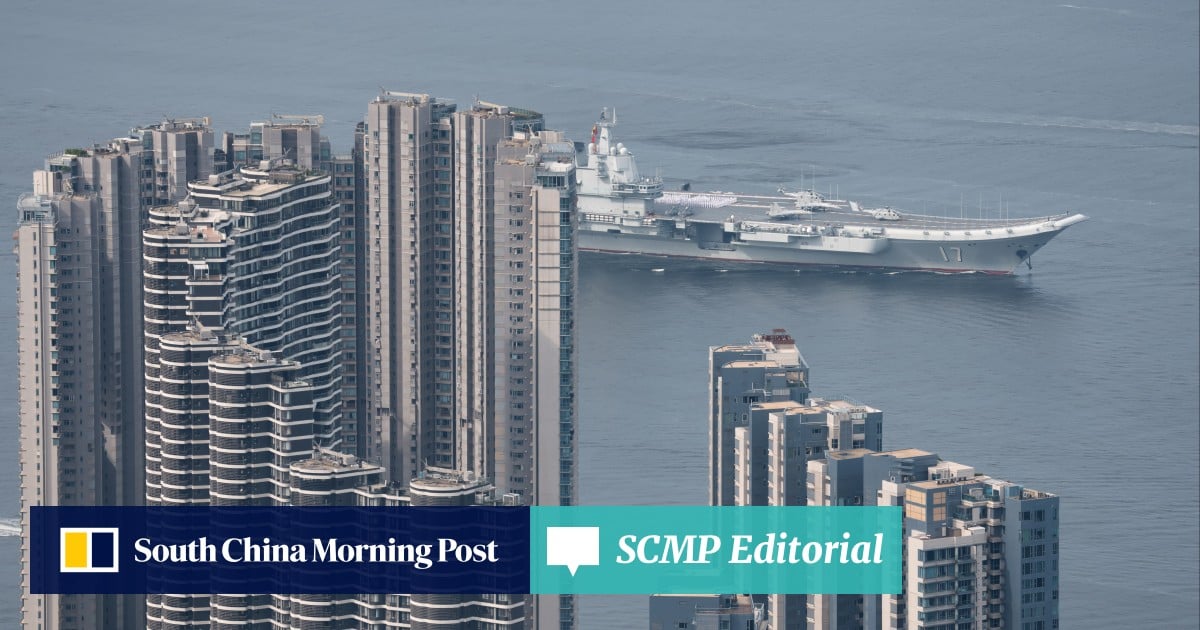What began as a curious alteration to a local hillside quickly spiralled into a nationwide stir. A summit, once unassuming, now draws attention for its unexpected resemblance to Japan’s iconic Mount Fuji. The transformation, triggered by a smoky grey cloud, sparked a wave of online amusement and confusion. Some locals, too, have remarked on the uncanny similarity, especially when the peak is veiled in cloud. At the centre of it all stands Kowloon Peak. Let’s get to know how this phenomenon came to be and how tourists have responded to this spectacle.
A Viral View from Quarry Bay
From the corner of Healthy Street East and King’s Road in Quarry Bay, an unexpected spectacle took shape. This single vantage point offered the only angle precise enough to capture the illusion in full – Kowloon Peak appearing as a snow-capped giant. It was here that the now-famous photographs were taken, just as drifting clouds brushed the summit. The moment aligned perfectly, framing the peak in a way that mimicked the serene silhouette of Mt Fuji.
Playfully nicknamed the ‘snow cap matcha volcano’ by amused onlookers, the hill’s uncanny resemblance quickly lit up social media. As photos made their rounds online, intrigue followed. The scene, complete with urban foreground and misty ridgeline, lacked only a convenience store to complete the Fuji-like composition.
Read more: Yemeni Island Socotra: The Most Alien-Looking Place On Earth Drawing Global Wanderers
Compelled by the viral snapshots, several residents made their way to Quarry Bay. Not just to see the hill itself but to stand where the camera did.
A similar moment unfolded in Thailand last year. A photo of Khao Ok Talu beside a 7-Eleven drew comparisons to the iconic Lawson snapshot beneath Mt Fuji.
About Kowloon Peak
Locally known as Fei Ngo Shan, meaning ‘Soaring Goose Mountain’, this peak rises prominently from the northeast edge of New Kowloon. At 1,975 feet, it claims the title of the highest point in the Kowloon region. Tucked within Ma On Shan Country Park, its rugged slopes straddle the border between Sai Kung and Wong Tai Sin districts. Two of Hong Kong’s well-known hiking routes, the Wilson Trail and the MacLehose Trail, cut across its terrain. The route makes a favoured challenge for avid trekkers.
Geologically, the peak is built on a foundation of volcanic rocks, particularly tuffs, with solid granite forming its lower reaches. Its natural formation, layered and textured, lends it a raw, untamed character rarely mirrored in artificial landscapes.
Read more: Chongqing, The 3D City: Chinese Megacity Looking Like AI-Generated
Echoes of Mount Fuji’s Symmetry
Veiled in mist and rising behind the city’s frame of glass and concrete, Kowloon Peak appears almost sculpted. The way the cloud clings to its summit lends it a hushed, snow-draped elegance. From this perspective, its form takes on a quiet grandeur, unexpectedly reminiscent of a distant volcano.
In contrast, Mount Fuji presents a near-perfect cone, its snowy peak often floating above soft horizons. Where Fuji looms with serene isolation, Kowloon Peak surprises, emerging from urban chaos with a momentary stillness. It doesn’t mimic Fuji’s symmetry, yet echoes its silhouette in a fleeting, almost cinematic illusion.
Though vastly humbler in scale and fame, the misty peak carves out its own quiet allure. It may lack the majestic sweep and spiritual weight of Mount Fuji, but it doesn’t seek comparison. Instead, it captivates in its own right—less a rival, more a reminder that even modest peaks can inspire awe.
Reactions Surrounding Mount Fuji of Hong Kong
What began as a light-hearted post on Threads soon rippled across social media, pulling in thousands of viewers intrigued by the resemblance. The buzz caught fire quickly. Some viewers found humour in the comparison, suggesting that all it needed was a denser veil of clouds. Others embraced the idea that this ‘Hong Kong version’ had its own appeal, a kind of localised charm distinct from its Japanese counterpart.
Read more: Wales’s Stream in the Sky: World’s Tallest Navigable Aqueduct Pontcysyllte
However, several visitors who came after seeing the picturesque images confessed to a sense of disappointment. For them, the so-called ‘mountain’ was little more than an ordinary hill. Some lamented how easy it is to be misled by carefully framed photographs. It pointed to this episode as yet another example of online visuals setting unrealistic expectations.
Despite the divided opinions, the view did manage to impress a few passersby. Some expressed genuine appreciation for the scenery, calling it unexpectedly beautiful. Others stopped to capture the moment themselves, aware of the growing online attention.
A number of visitors returned to the same vantage point in hopes of replicating the famed composition. Not all succeeded; many missed the fleeting cloud formations that gave the illusion its power.
For Hikers, It’s More Than Just A View
Multiple trails snake their way toward the summit, with routes branching off from both Jat’s Incline and Fei Ngo Shan Road. These provide varying levels of challenge, but one, in particular, casts a long shadow over the others. An infamous ascent that has come to be known as Suicide Cliff.
Read more: Smiling Quokka Turned Rottnest Island into a Global Tourist Hotspot
Despite its ominous name, the moniker does not stem from tragedy but rather from the sheer danger posed by its terrain. This vertical scramble, beginning from Clear Water Bay Road, isn’t a traditional hiking path. It’s an exposed rock face that demands agility, courage, and luck. The risk is not theoretical; the climb has been marked by real peril, including accidents and fatalities. One dramatic incident even saw 160 firefighters deployed in a large-scale rescue when two tourists found themselves stranded.
For most hikers, however, the thrill of reaching the peak need not involve danger. Fei Ngo Shan Road offers a far gentler approach, one that rewards effort with breathtaking views, not unnecessary risk.
Final Words
Hong Kong’s clouded Kowloon Peak, as seen from Quarry Bay, drew comparisons to Mount Fuji for its misty silhouette. The image sparked mixed reactions online – some were amused, others felt misled. Hikers, however, admire it for the thrill of Suicide Cliff and its challenging trails. Amid Hong Kong’s dense cityscape, the peak offers a rare blend of rugged beauty and quiet reflection. It proves that even in the chaos of urban life, moments of natural grace can still hold meaning.
Read more: UNESCO World Heritage Sites in Bangladesh


